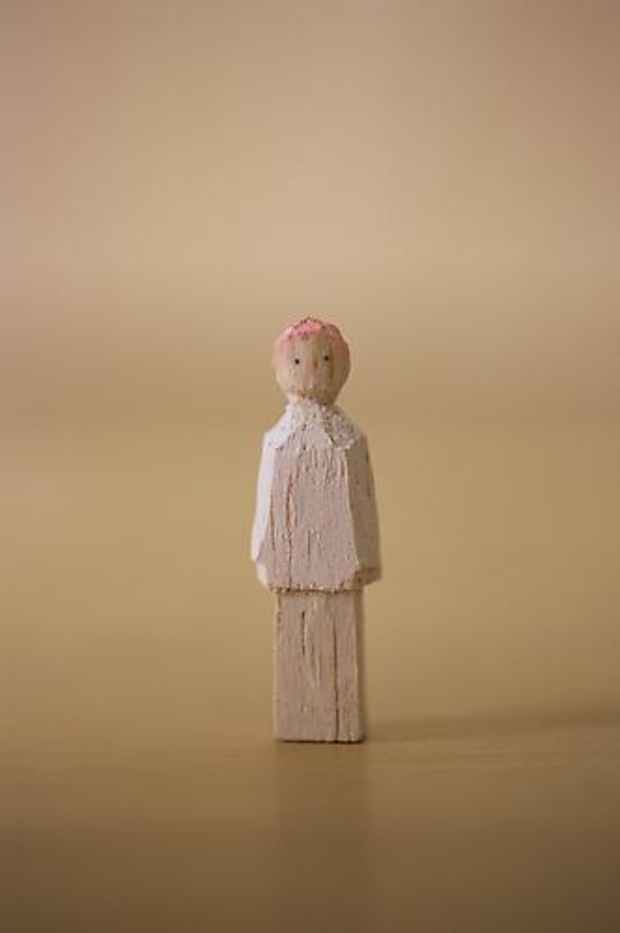"The Masked Portrait Part II - When Vibrations Become Forms" Exhibition
Marianne Boesky Gallery 24th Street

This event has ended.
Marianne Boesky Gallery presents The Masked Portrait Part II, the rejoinder to the gallery’s semi-survey from 2008 of Post-war Japanese contemporary art, which expressed the radical responses to and indications of the rapid regeneration of the country and how it transformed the inner rather than the outer identities of the Japanese collective psyche. This second installment of the exhibition focuses on the mask that slowly reveals the philosophical, conceptual and spiritual underpinnings of the Japanese culture as the human consciousness transcends the intrinsic worldly dualities: matter/spirit, yin/yang, and existence/non-existence.
Frozen forever by the bombing of Nagasaki in 1945, Shomei Tomatsu’s photograph of a watch, Atomic Bomb Damage, Wristwatch stopped at 11:02, August 9, 1945, appears here again almost as if a relic from another time, but this dedicated photographer continues today to document the long endured scars and prolonged suffering of the people of Nagasaki. Sixty-six years later, the recent tsunami resulting in the meltdown at the Fukushima Daiichi nuclear plant dissolved much of Japan’s standard operating procedures, severely testing our fundamental preconceptions and melting our perceptions of reality into illusions.
The exhibition begins with Yuichi Higashionna’s fluorescent light chandelier installation as it immediately reveals our excesses and pretensions while Aiko Miyanaga, through an innovative use of Naphthalene, an aromatic hydrocarbon most commonly used in mothballs, creates a decomposing clock . Through its natural sublimation process, the work reminds us of our losses, memories and transformations. In contemplations of time, this clock is constantly changing in form, akin to the life and work of the artist Akira Kanayama. A significant member of the Gutai Art Association, Kanayama occupied a rare place in the history of Japanese post-war art. Footprints, originally made in 1956 for the legendary 1st Gutai Outdoor Exhibition, was his attempt of automatism by making marks in space and recording them on a long narrow roll of plastic. In 1992, Kanayama broke his twenty-seven year artistic silence as he further transformed automatism into a realm of extreme subtlety and finesse through his visual renderings of classical music recordings made by way of a sound-analyzing machine. It is to his singular efforts in transforming his vision and approach to which the exhibition subtitle, When Vibrations Become Forms is dedicated.
Tsuruko Yamazaki’s Tin Cans, 1955 (reconstructed in 1986), exudes a tactile sensuality that she simultaneously explores in her tin paintings. Five of these predominantly blue-hued tin wall pieces each titled, Work, 2011, are shown together with her work Red, 1956 (reconstructed in 2011). Originally shown outdoors along with with Kanayama’s Footprints, and hung from tree branches as if it were a large, red mosquito net, Yamazaki’s Red merges once again with Kanayama’s for this exhibition as playfulness and ingenuity abound. Clearly moving away from Kanayama’s conceptual automatism of the earlier Gutai activities, Norio Imai’s White Ceremony-Diamond A, shown at the Gutai Pinacotheca in 1966, demonstrates the artist’s early maturation with its spatial dynamism, cool monochromatic formalism and swelling surface. With all of the fervor and collected energy from his involvement with the Hi Red Center collective (1963-4), Natsuyuki Nakanishi slowly distills these experiences into his paintings G/Extensiveness. Straight. May IV and II, from 1992, as they sizzle and vibrate from within their biomorphic patterns. Also a member of the Hi Red Center, Jiro Takamatsu’s Shadow of a Brush No.178, 1967 appears again here as it did in the first iteration of The Masked Portrait, as the artist deftly blends painted shadows with objects. Effectively layering shadow, upon shadow, upon shadow, he uncovers the multiple dimensions of reality. Like Takamatsu’s layers that expose, Noriyuki Haraguchi’s cast polyurethane wall reliefs represent the density of objecthood as they ominously reflect ourselves with ironic, black lacquer-like perfection. human, Rei Naito’s miniscule hand-carved figures bear gentle features and pink heads. Though three-inches high they are forty-six strong in number. This community embraces Grace en masse, Naito’s beaded work strung from the ceiling above the figures. The magic created here heightens and restores an authentic connection to ourselves.
[Image: Rei Naito "human" (2011)]
Media
Schedule
from October 29, 2011 to December 17, 2011
Opening Reception on 2011-10-29 from 18:00 to 20:00